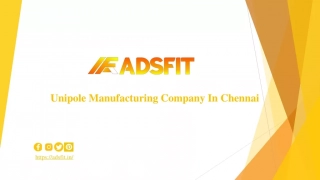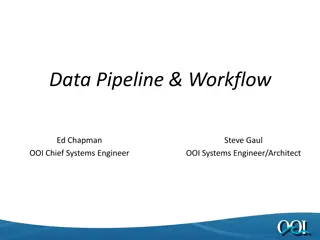Dive into Manufacturing with Tim Christensen, Manufacturing Engineer at The Boeing Company
Explore the exciting journey of Tim Christensen, a manufacturing engineer at Boeing, as he shares insights into his career highlights, passion for problem-solving, and the intricate processes behind manufacturing airplanes. Discover the importance of engineering skills in realizing innovative ideas and how you can embark on a rewarding career in manufacturing. Join Tim on a fascinating ride through the world of aircraft design and production.
Download Presentation

Please find below an Image/Link to download the presentation.
The content on the website is provided AS IS for your information and personal use only. It may not be sold, licensed, or shared on other websites without obtaining consent from the author.If you encounter any issues during the download, it is possible that the publisher has removed the file from their server.
You are allowed to download the files provided on this website for personal or commercial use, subject to the condition that they are used lawfully. All files are the property of their respective owners.
The content on the website is provided AS IS for your information and personal use only. It may not be sold, licensed, or shared on other websites without obtaining consent from the author.
E N D
Presentation Transcript
TAKE FLIGHT . . . IN MANUFACTURING! TIM CHRISTENSEN MFG ENGINEER, THE BOEING COMPANY
WHATS IN THIS FOR YOU? Why am I so excited to be here? Why I chose an engineering career, in manufacturing . . . Learn the highlights of my career . . . What is there to know about manufacturing airplanes? How does the design and manufacturing process work? How you can have some fun experimenting with aircraft for yourself
IM EXCITED!! It s an honor really, to be able to be here, and speak with you, hopefully to influence you on your path to success, and seek a manufacturing career (hopefully at Boeing!). I love making things every day is a chance for me to help a team of very talented people make some of the coolest products on earth. It s very rewarding to be able to put your hands on the realization of those talents, skills, and creative thinking. And there is good $ in it. Problem solving is GREAT!! There is a never ending supply of problems to solve, to have fun and help achieve success.
WHY ENGINEERING? Truthfully, my main interest is in manufacturing. But to develop processes to convert ideas into reality, engineering skills are needed. This is the 41stanniversary of my first Engineers Week!! That is coming up next month, if you are interested in attending a session near you. My H.S. math and physics teacher took a few of us kids to this event. I was also influenced by my mom, dad, brothers and sisters. My dad learned leadership skills in the Army Airborne, and became a senior manufacturing manager, 400 employees My brother has been a machinist since high school, after going to a trade school Presentations like this are my way to honor people who ve made a positive impact on my life, to give back, and remember them. Plus, my wife liked that I was an engineer and I am thankful for that.
CAREER HIGHLIGHTS 1988, I was looking for a job after graduation, and a college classmate helped me find one at McDonnell Douglas, in Long Beach (networking, yes) 33 years later, product development experience: T45, C17, MD11, MD90, 717 747-8, 787, 737, 777X Earned a masters degree Metallic materials fabrication (machining, forming, welding) and assembly Composites assembly and repairs Additive manufacturing 20+ years learning, waiting for the time to be right to convert the idea to reality, watching for an opportunity . . .
MANUFACTURING? WHAT ABOUT IT? Engineering applications in manufacturing are vast!! For every family of parts, a process must be designed: The raw materials The process to convert it to final form How to hold it (tooling fixures) How to cut it or shape it (machines, cutters) How to assemble it (robots?) How to move and deliver it How to maintain and replace it How to recycle it Manufacturing careers are really important within our communities each manufacturing job is known to generate more than 3 additional jobs that support it in some way All springing from one product designer s idea. There are literally thousands of designers ...
THE DESIGN PROCESS . . . It is a process: with aircraft, a repeating process, homing in on the target. Imagine 500,000 parts, interdependent 2-3 cycles of refinement Starts and ends with the customer ask . . . understand customer need and deliver it. Include customers on the team as much as possible . . . Many customers one is the manufacturing team. Goal is to design for manufacturing, the key to a high quality and affordable product. Models using math, and simulation tools like CAD, to fit the solution to the customer need. These Digital Tools are used to manage nearly the entire process first a virtual digital twin is created, and then we make a physical part to match it. Testing and verification that the models are all correct, the parts are safe and high quality, and perform as designed. Long term optimization for cost, and incorporating developing technology
EXPERIMENT AND LEARN: Glider Project how to make it fly far Apply a process for designed experiments to learn about engineering optimization, or just to understand flight Make a few models, take some measurements, learn how to understand the problem and improve the outcome. Have your educator contact me, I can work with them to: Provide a pattern Ideas for experimentation Coach on the process QUESTIONS: ANYONE???























